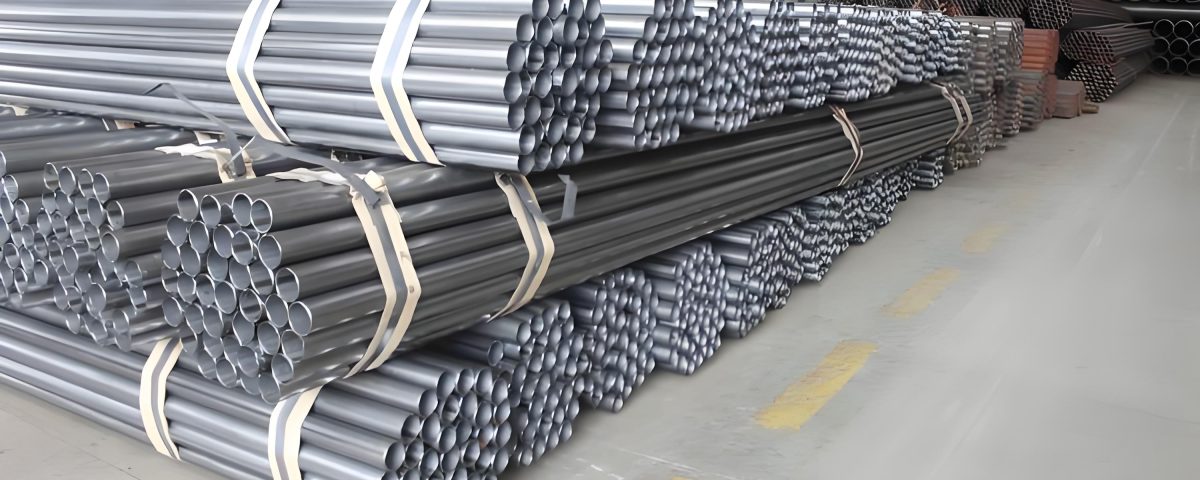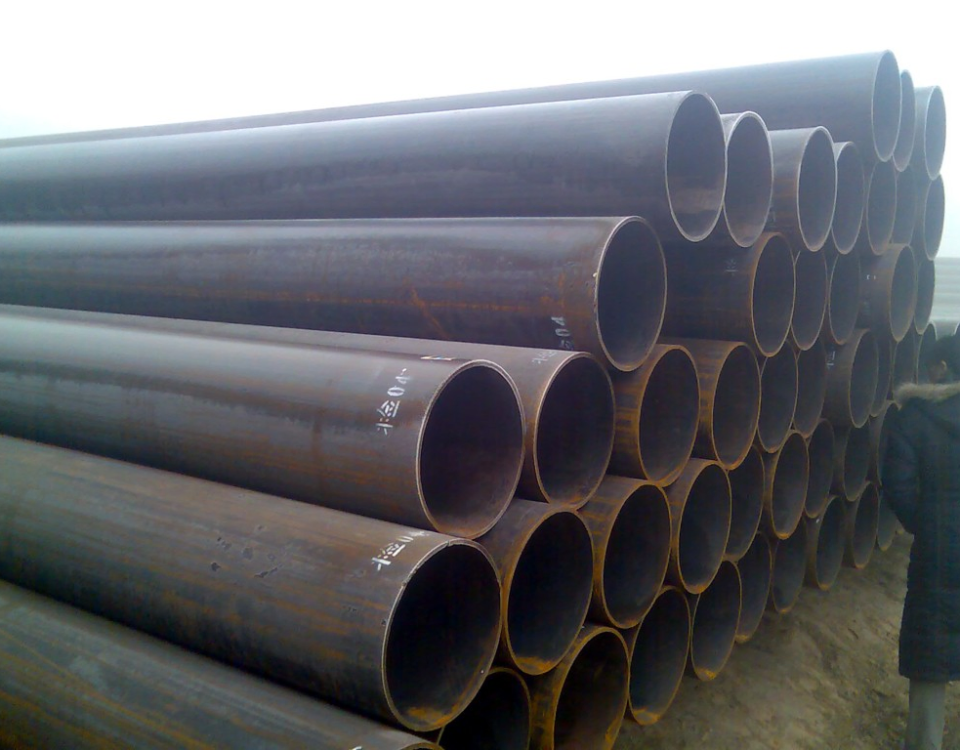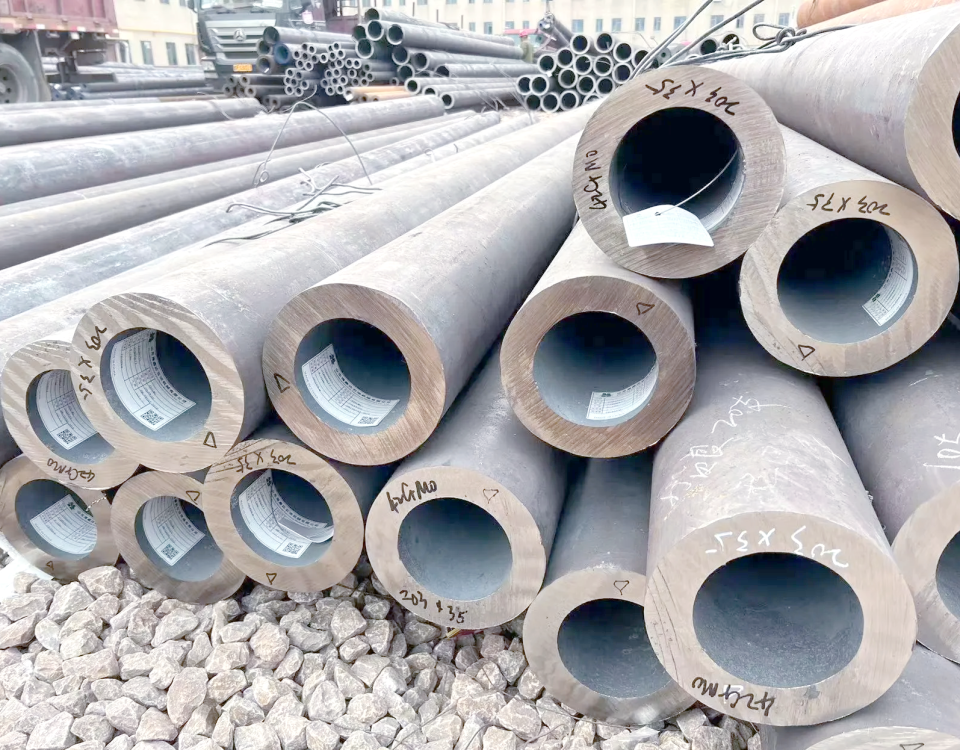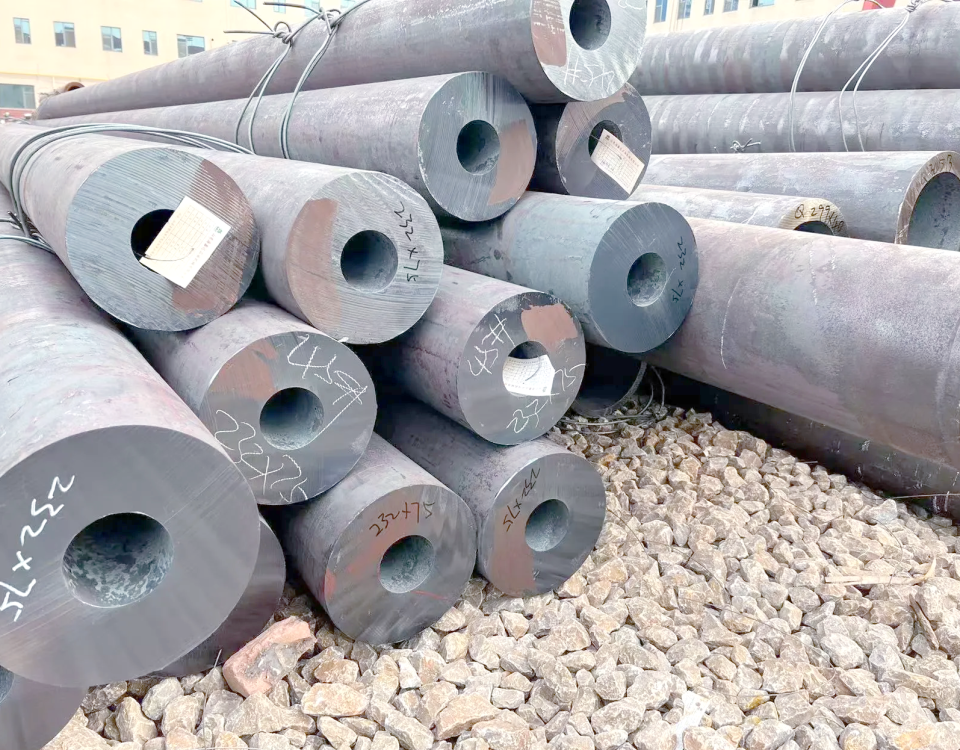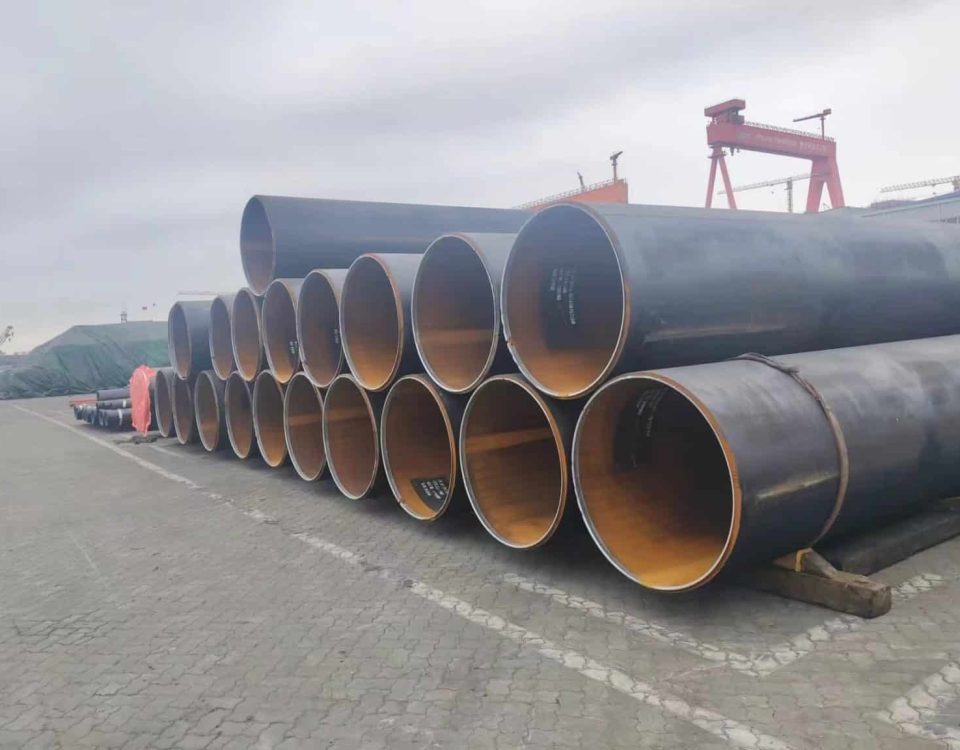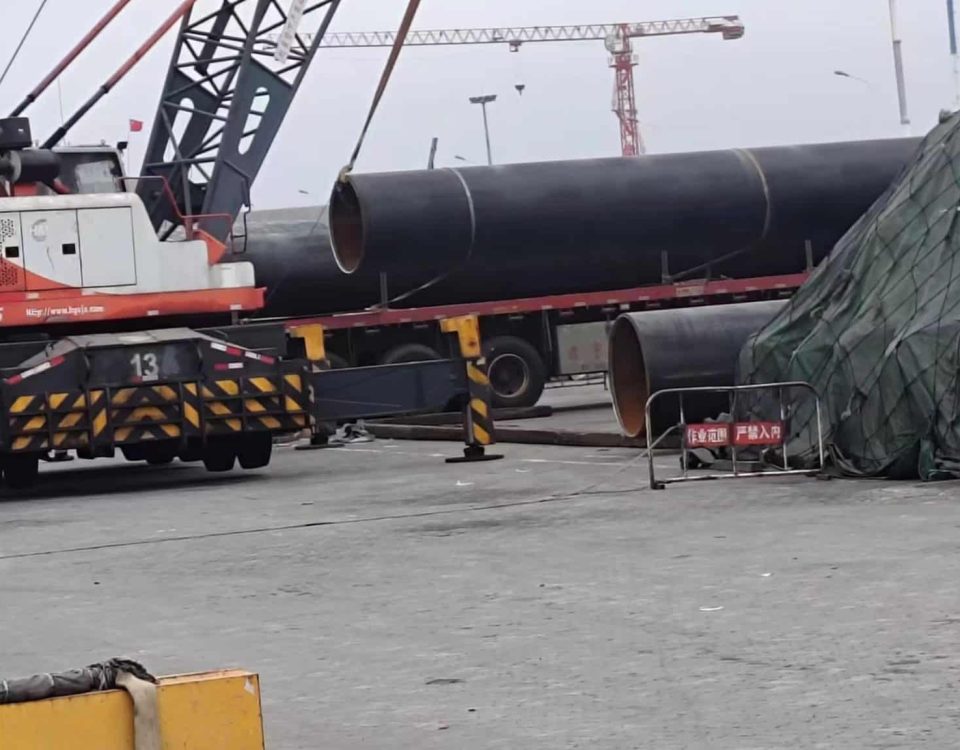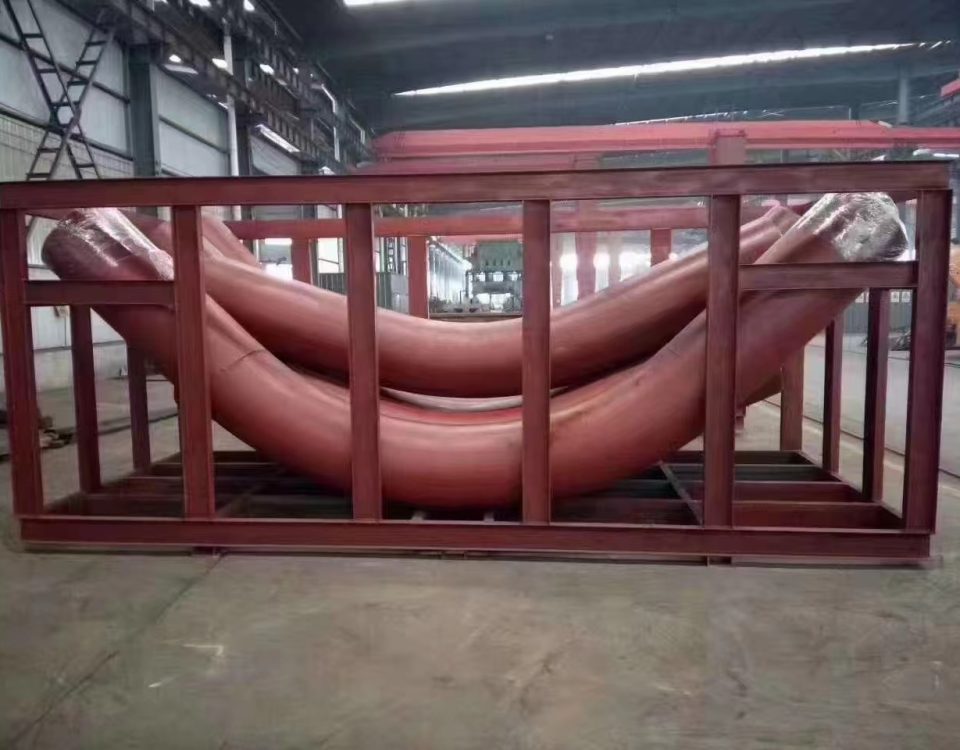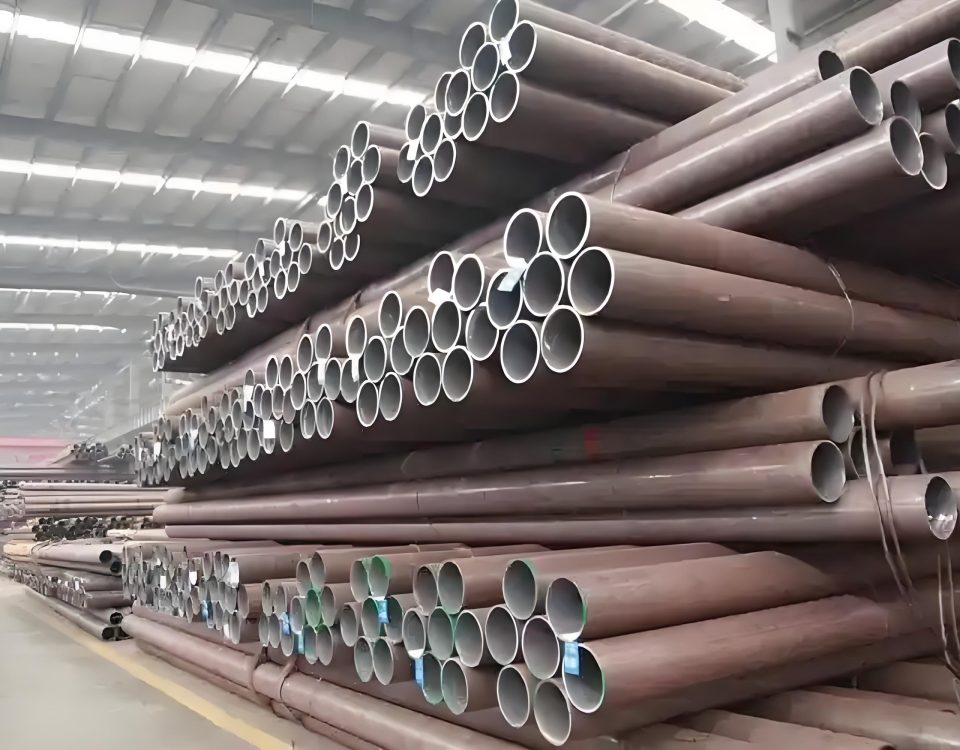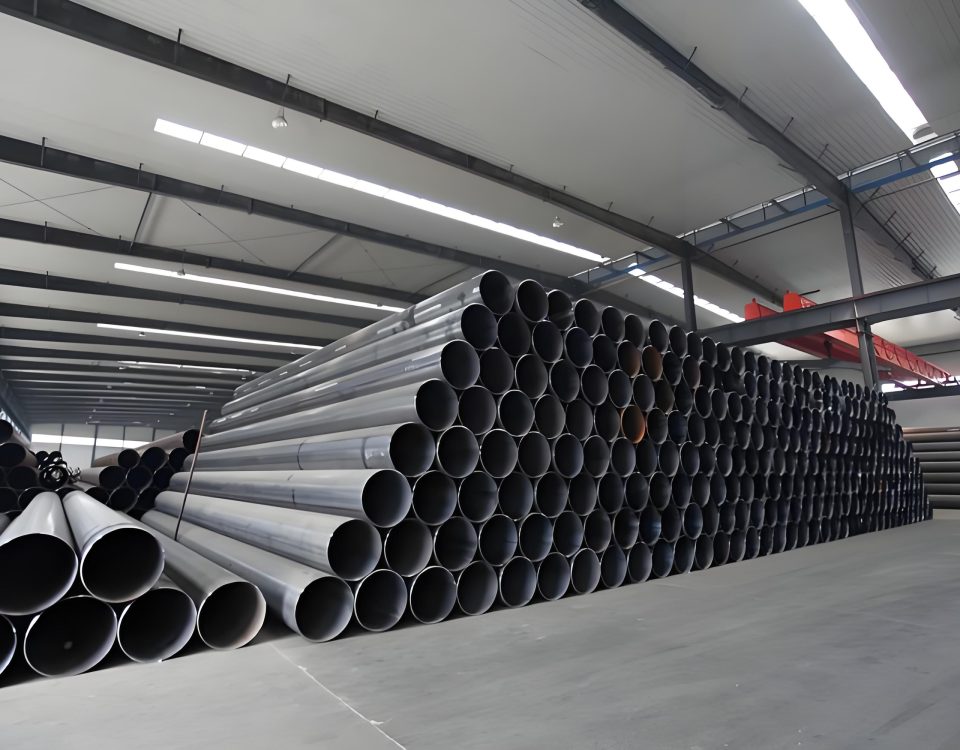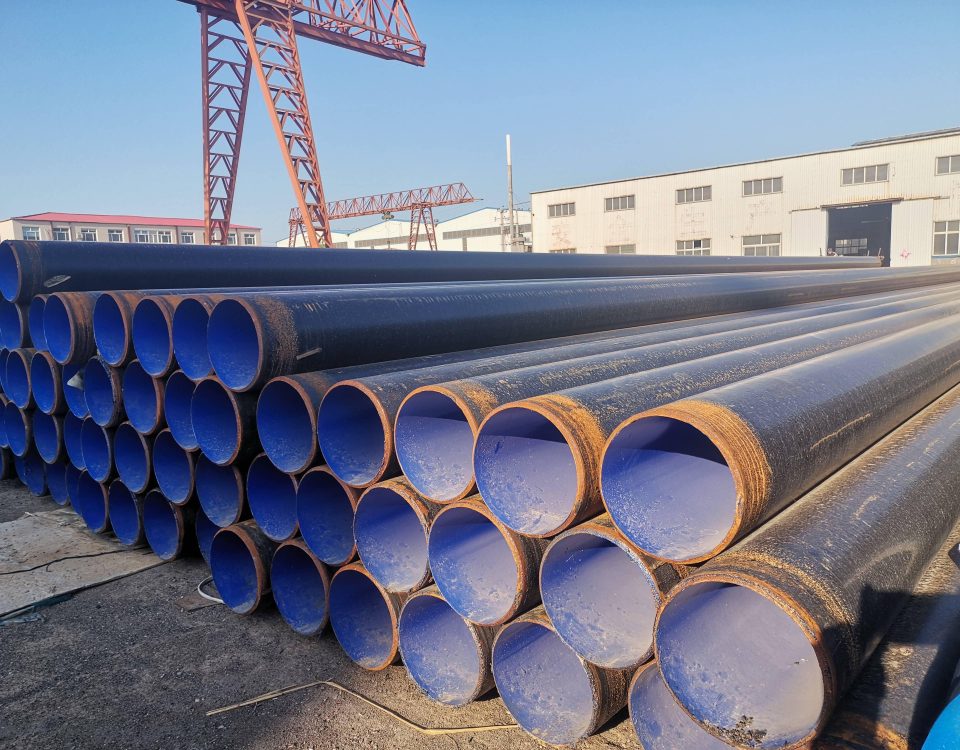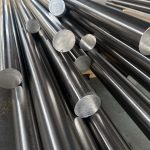
Hastelloy X UNS N06002 – W. Nr. 2.4665 | Sheet/Bar/Pipe/ Plate/Foring Ring
August 10, 2025
reinforce the best pipe fitting price list
August 19, 2025ASTM A672 EFW Steel Pipe | GR C60 B60 C65 C70
Introduction to ASTM A672 EFW Steel Pipe
ASTM A672 EFW steel pipe is a specification for electric-fusion-welded (EFW) steel pipe designed for high-pressure service at moderate temperatures, commonly used in industries such as petrochemical, power generation, and oil refining. The specification covers pipes fabricated from pressure vessel quality plate materials, with filler metal added during the welding process to ensure a strong, reliable seam. Grades like C60, B60, C65, and C70 represent different combinations of plate materials and strength levels, each tailored to specific operating conditions. For instance, grade C60 is made from ASTM A516 Gr 60 plate, offering good toughness and weldability, while B60 uses A515 Gr 60, suitable for elevated temperature service. These grades provide a balance of strength, ductility, and cost-effectiveness, making them ideal for applications where high pressure and moderate heat are involved, such as boiler tubes, heat exchangers, and piping systems in refineries.
The EFW process involves rolling plate into a cylindrical shape and welding the longitudinal seam using electric fusion, resulting in pipes with diameters typically 16 inches and larger, and wall thicknesses up to 3 inches. The pipes are heat-treated to relieve stresses and improve mechanical properties, with options for normalizing, quenching, or tempering depending on the class (e.g., Class 10, 20, 30). Compliance with ASTM A672 ensures the pipes meet rigorous testing requirements, including hydrostatic testing, non-destructive examination, and mechanical tests, guaranteeing reliability in demanding environments. Compared to seamless pipes, EFW pipes are more economical for large diameters, while offering comparable performance. This article delves into the chemical composition, mechanical properties, corrosion resistance, manufacturing processes, and applications of ASTM A672 grades C60, B60, C65, and C70, with tables summarizing key parameters. By examining these aspects and comparing them to other materials like Inconel 718 and API 5L pipes, the article highlights their significance in modern industrial applications.
Chemical Composition and Material Analysis
The chemical composition of ASTM A672 EFW steel pipes varies by grade, reflecting the underlying plate materials used in their fabrication. For grade B60, derived from ASTM A515 Gr 60 plate, the composition includes carbon up to 0.24%, manganese up to 0.98%, phosphorus and sulfur each up to 0.035%, and silicon between 0.13% and 0.45%. Grade C60, based on ASTM A516 Gr 60, has carbon up to 0.21% for thicknesses under 12.5 mm, increasing to 0.27% for thicker sections, manganese from 0.55% to 1.30% depending on thickness, phosphorus and sulfur up to 0.025%, and silicon 0.13% to 0.45%. Grade C65 from A516 Gr 65 has carbon up to 0.24% for thin sections, manganese 0.79% to 1.30%, and similar low phosphorus and sulfur levels. Grade C70 from A516 Gr 70 features carbon up to 0.27%, manganese 0.79% to 1.30%, and tight controls on impurities to ensure toughness and weldability.
These compositions are designed to provide a balance of strength and ductility, with low carbon content minimizing carbide formation during welding, reducing the risk of cracking. Manganese contributes to solid-solution strengthening, while silicon aids in deoxidation. The low phosphorus and sulfur levels enhance toughness and reduce brittleness, critical for high-pressure service. Compared to high-nickel alloys like Inconel 718 (50-55% nickel, 17-21% chromium), ASTM A672 grades have a simple carbon steel base, offering cost advantages but requiring coatings for corrosion protection in aggressive environments. Incoloy 901, with its nickel-iron-chromium matrix, provides superior high-temperature strength but is overkill for moderate-temperature applications. API 5L PSL2 BNS pipes, with carbon up to 0.12% and manganese up to 1.20%, are optimized for sour service but lack the pressure vessel quality focus of A672. The material analysis emphasizes the suitability of these grades for moderate-temperature, high-pressure piping, where their composition ensures reliable performance without excessive alloying costs.
Mechanical Properties of ASTM A672 Pipes
The mechanical properties of ASTM A672 EFW pipes make them well-suited for high-pressure applications at moderate temperatures. Grade B60 has a minimum yield strength of 220 MPa and tensile strength of 415-550 MPa, with elongation of at least 25%. Grade C60 offers similar properties, with yield strength of 220 MPa, tensile strength 415-550 MPa, and elongation 25% for thicknesses under 12.5 mm. Grade C65 increases the yield to 240 MPa and tensile to 450-585 MPa, with elongation 23%, while C70 provides yield of 260 MPa, tensile 485-620 MPa, and elongation 21%. These properties are achieved through the base plate’s fine-grain structure and post-weld heat treatment, which relieves stresses and refines the microstructure.
The pipes undergo rigorous testing, including tensile tests on base metal and weld, guided bend tests, and hydrostatic testing to 60% of yield strength. For higher classes, impact testing ensures toughness. Compared to Inconel 718’s yield of 1035 MPa and tensile of 1275 MPa, A672 grades are less strong but sufficient for moderate conditions and far more economical. Incoloy 901’s yield of 900 MPa is higher, but its use is limited to high-temperature environments. ASTM A671 CC60, similar but for low temperatures, has yield of 220 MPa, while API 5L PSL2 BNS has 245 MPa, optimized for line pipe service. The mechanical properties of A672 pipes ensure durability in boilers, heat exchangers, and piping systems, where balanced strength and ductility are essential for long-term performance.
Corrosion Resistance Characteristics
ASTM A672 EFW pipes exhibit moderate corrosion resistance, primarily due to their carbon steel composition, which can be enhanced with coatings for aggressive environments. The low carbon and impurity levels reduce susceptibility to intergranular corrosion during welding, but in atmospheres with moisture or chemicals, external coatings like epoxy or polyethylene are recommended. For sour service, grades can be selected with NACE MR0175 compliance, controlling hardness to prevent sulfide stress cracking. In moderate-temperature applications, the pipes resist scaling and oxidation better than low-alloy steels, but they are not as robust as nickel alloys.
Compared to Inconel 718, with its high chromium and molybdenum for pitting resistance in chlorides, A672 pipes require protective measures in similar conditions. Incoloy 901 offers good oxidation resistance but is prone to scaling in sulfur environments. ASTM A671 CC60, for low temperatures, has similar corrosion traits but is NACE-compliant for sour service. API 5L PSL2 BNS, designed for sour gas, has enhanced SSC resistance but needs coatings for external corrosion. The corrosion resistance of A672 pipes makes them reliable for petrochemical and power plants, where moderate exposure to corrosives is expected, and coatings extend service life effectively.
Manufacturing and Processing of ASTM A672 Pipes
The manufacturing of ASTM A672 EFW pipes involves rolling pressure vessel quality plates into cylinders and welding the longitudinal seam using electric fusion with filler metal. Plates for grade B60 come from A515 Gr 60, C60 from A516 Gr 60, C65 from A516 Gr 65, and C70 from A516 Gr 70. The welding process ensures full penetration, with post-weld heat treatment (PWHT) mandatory for higher classes to relieve stresses and improve properties. Normalizing, stress relieving, or quenching and tempering are applied based on class (e.g., Class 12 for PWHT, Class 22 for normalizing).
Pipes undergo non-destructive testing like radiography or ultrasonic examination for weld quality, hydrostatic testing to verify pressure integrity, and mechanical tests on samples. The process allows for large diameters (16 inches and up) and thick walls, making it economical for high-pressure applications. Compared to Inconel 718’s complex forging and aging, A672 manufacturing is simpler, focusing on carbon steel welding. Incoloy 901 requires precipitation hardening, while ASTM A671 CC60 uses similar EFW but for low temperatures. API 5L PSL2 BNS involves LSAW with stringent NDE for sour service. The manufacturing of A672 pipes ensures high-quality, reliable products for moderate-temperature, high-pressure service in industrial settings.
Applications of ASTM A672 Pipes
ASTM A672 EFW pipes are extensively used in industries requiring high-pressure piping at moderate temperatures. Grade B60 is common in power plants for boiler tubes and steam lines, where its strength handles pressure without excessive heat. C60 finds application in petrochemical refineries for heat exchangers and process piping, benefiting from A516’s toughness. C65 and C70 are preferred for higher-strength needs in oil refining and chemical processing, where elevated pressures and moderate corrosives are present. These pipes are also used in fertilizer plants, pharmaceuticals, and food processing for their reliability and cost-effectiveness.
Compared to Inconel 718’s use in aerospace turbines, A672 pipes are for less extreme conditions but offer economical alternatives. Incoloy 901 is for gas turbines, while ASTM A671 CC60 is for low-temperature pipelines in oil and gas. API 5L PSL2 BNS is for sour gas transport. The versatility of A672 pipes, with customizable lengths and ends (plain, beveled), makes them essential for infrastructure where durability and pressure resistance are key, ensuring safe operation in various industrial setups.
Technical Specifications and Parameter Table
To provide a clear reference, the following table summarizes key parameters for ASTM A672 grades C60, B60, C65, and C70, including chemical composition, mechanical properties, and other specifications.
| Parameter | B60 | C60 | C65 | C70 |
|---|---|---|---|---|
| Plate Material | A515 Gr 60 | A516 Gr 60 | A516 Gr 65 | A516 Gr 70 |
| Carbon Max (%) | 0.24 | 0.21-0.27 | 0.24-0.29 | 0.27-0.31 |
| Manganese (%) | ≤0.98 | 0.55-1.30 | 0.79-1.30 | 0.79-1.30 |
| Phosphorus Max (%) | 0.035 | 0.025 | 0.025 | 0.025 |
| Sulfur Max (%) | 0.035 | 0.025 | 0.025 | 0.025 |
| Silicon (%) | 0.13-0.45 | 0.13-0.45 | 0.13-0.45 | 0.13-0.45 |
| Yield Strength Min (MPa) | 220 | 220 | 240 | 260 |
| Tensile Strength (MPa) | 415-550 | 415-550 | 450-585 | 485-620 |
| Elongation Min (%) | 25 | 25 | 23 | 21 |
| Heat Treatment | Optional | Normalized | Normalized | Normalized |
| Applications | Boilers, heat exchangers | Petrochemical piping | Oil refining | Chemical processing |
This table serves as a quick reference for the alloy’s capabilities, ensuring designers can select appropriate grades for specific performance criteria.
Comparison with Other Steel Pipes and Alloys
ASTM A672 EFW pipes in grades C60, B60, C65, and C70 are often compared to other materials for their suitability in high-pressure applications. Compared to Inconel 718, with its high nickel content and yield strength of 1035 MPa, A672 pipes offer lower strength but are more affordable for moderate temperatures. Incoloy 901, with yield of 900 MPa, is better for high temperatures but not for general piping. ASTM A671 CC60, for low temperatures, has similar composition to C60 but different heat treatment. API 5L PSL2 BNS, with yield of 245 MPa, is for line pipe but lacks the pressure vessel focus of A672. The choice depends on temperature, pressure, and cost, with A672 providing a balanced option for industrial use.
Challenges and Limitations
ASTM A672 EFW pipes face challenges in corrosive environments, requiring coatings to prevent rust and scaling, unlike Inconel 718’s inherent resistance. Welding must be controlled to avoid defects, with filler metal addition increasing complexity. For higher temperatures or pressures, grades like C70 may be limited, requiring alternative alloys. Compared to seamless pipes, EFW has weld seams that could be weak points, necessitating rigorous testing. Manufacturing large diameters is economical but requires precise plate quality to avoid imperfections. These limitations are mitigated through proper heat treatment and testing, ensuring reliability in moderate conditions.
Future Trends and Innovations
The future of ASTM A672 EFW pipes lies in advanced welding techniques and coatings to enhance durability. Innovations in filler metals and automated welding reduce defects, while nano-coatings improve corrosion resistance. Sustainability focuses on recycled plates and low-carbon production. Compared to Inconel 718’s additive manufacturing, A672 emphasizes cost-effective large-scale production. As industries demand higher efficiency, these pipes will evolve with digital monitoring for predictive maintenance, ensuring continued relevance in petrochemical and power sectors.
Conclusion
ASTM A672 EFW steel pipes in grades C60, B60, C65, and C70 are essential for high-pressure, moderate-temperature applications, offering balanced strength and cost. Their composition from A515 and A516 plates ensures weldability and toughness, with mechanical properties suited for boilers and piping. Corrosion resistance is adequate with coatings, and manufacturing involves EFW with heat treatment for reliability. Compared to Inconel 718 and others, they provide economical alternatives. The table summarizes key data, guiding selection. Future innovations will enhance their performance, solidifying their role in industrial infrastructure.

